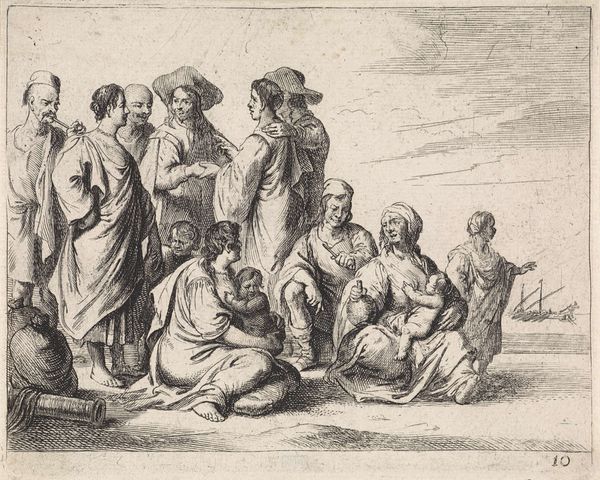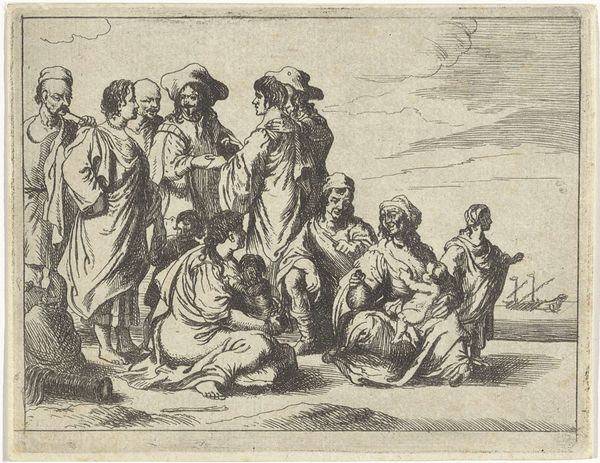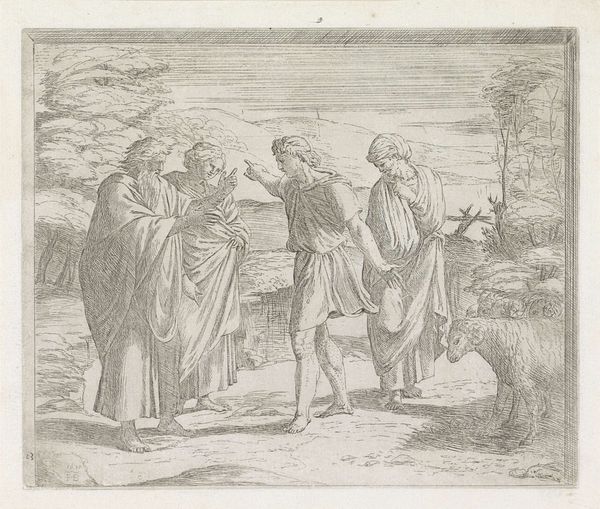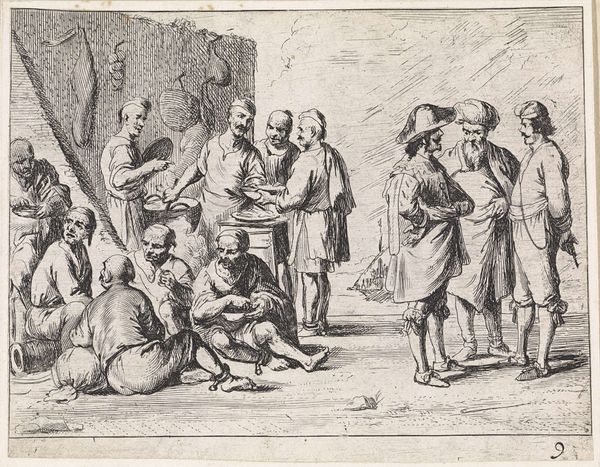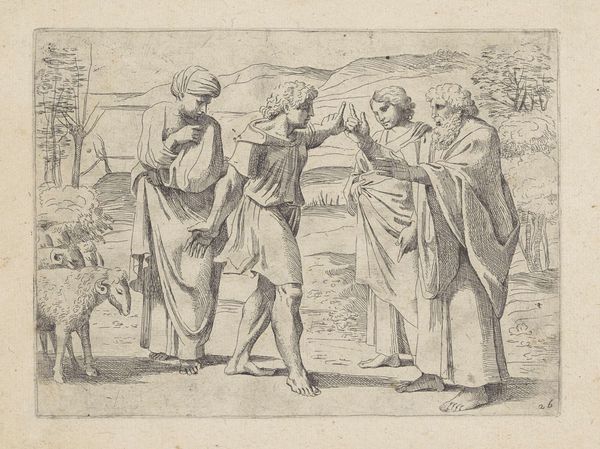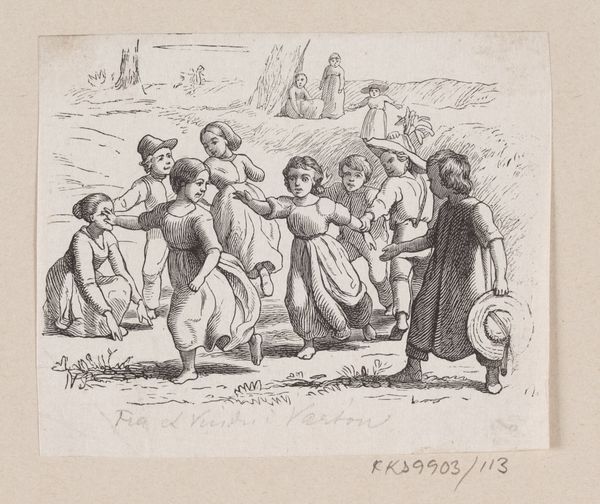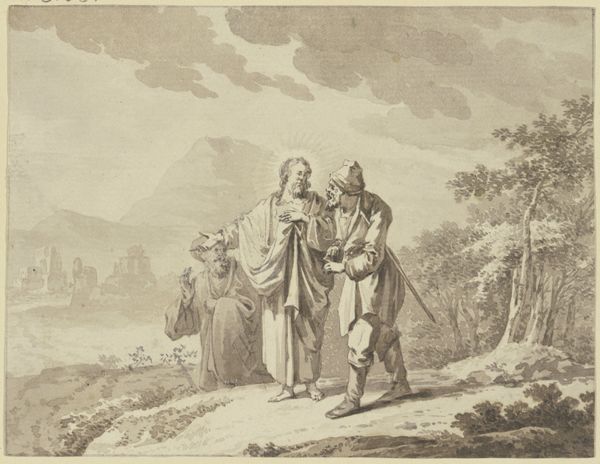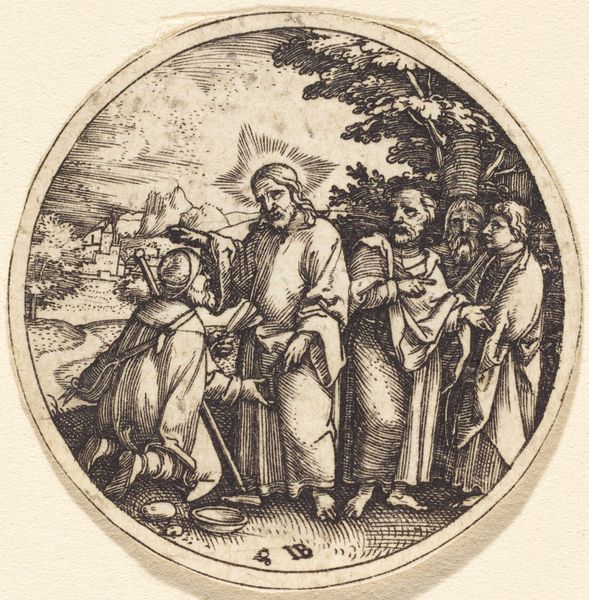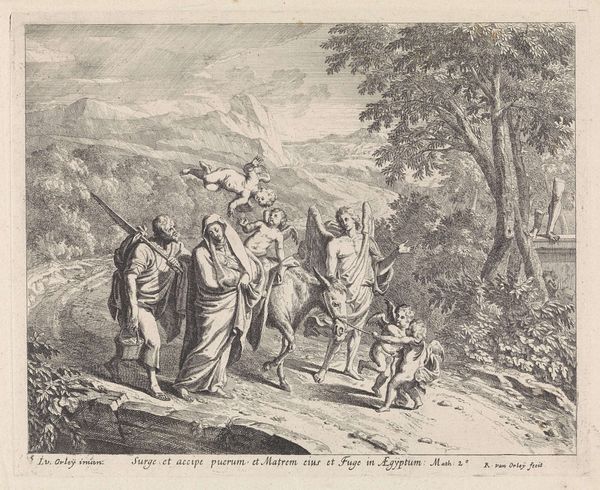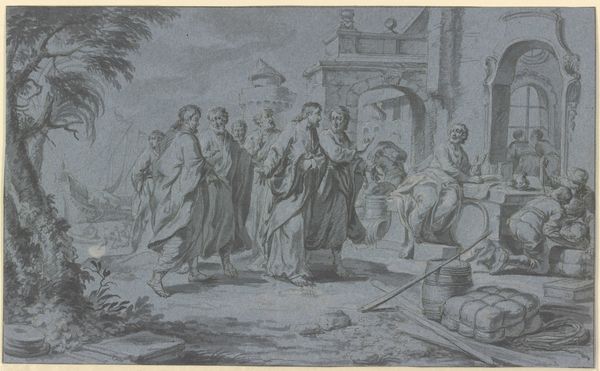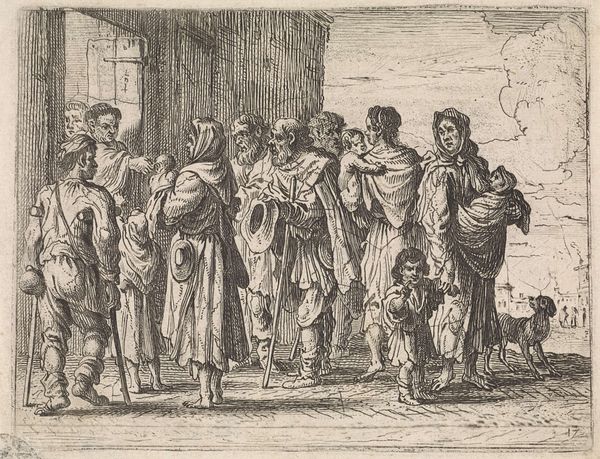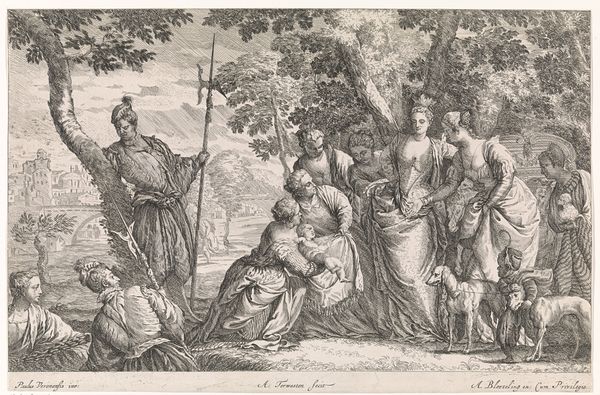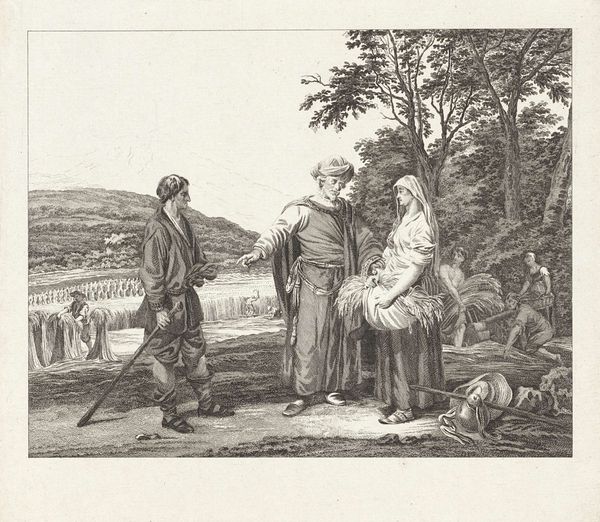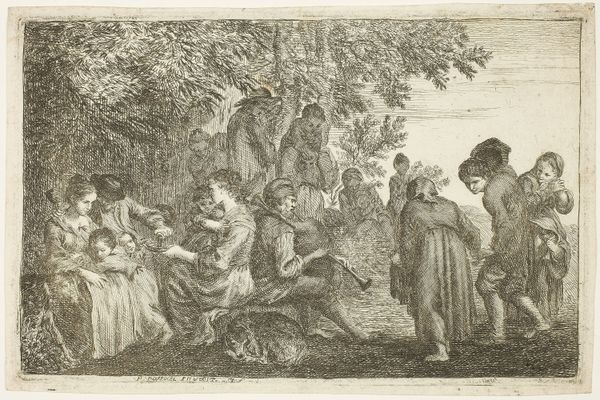
The daughters of Aglaura (Mercury and Herse) 1641 - 1651
0:00
0:00
drawing, print, etching
#
drawing
#
baroque
# print
#
etching
#
landscape
#
figuration
#
history-painting
Dimensions: Sheet: 3 1/4 × 3 13/16 in. (8.2 × 9.7 cm) cut outside borderline
Copyright: Public Domain
Editor: This etching by Wenceslaus Hollar, titled "The Daughters of Aglaura," created between 1641 and 1651, has a captivating circular composition. The women processing through the landscape evoke a sense of classical antiquity. What's your perspective on this work? Curator: Well, considering the etching technique itself – the physical act of incising lines into a metal plate to reproduce an image – it’s impossible to separate the image from its means of production. Hollar’s skilled labor created multiple impressions; How does that impact our reading of it as either fine art or commodity? Does the reproducible nature challenge traditional boundaries of art making, creating multiple originals in essence? Editor: That's a fascinating point. It makes me consider the economics of art in the 17th century – were these prints more accessible to a wider audience because of the production method? Curator: Exactly! Consider the paper, ink, and the printing press itself. The image’s distribution relied on material resources and social systems, influencing its reach and meaning. Who controlled access to these materials and who could afford them? The very act of creating multiple copies democratizes the image but relies on complex, class-defined material realities. Do you think Hollar himself was considering the social impact? Editor: I suppose it's difficult to say definitively. It's likely he understood the commercial aspects, given printmaking’s role as a means of income. The details in the landscape and the figures suggest an attention to detail beyond mere function. Curator: Perhaps. Ultimately, acknowledging the social and material context gives us a much deeper understanding than purely aesthetic appreciation, right? Editor: Absolutely. I've never considered that before. Now, I'm more intrigued by what these figures could mean within their time. Curator: Precisely! Each work's existence can unveil underlying currents we hadn't previously considered.
Comments
No comments
Be the first to comment and join the conversation on the ultimate creative platform.
